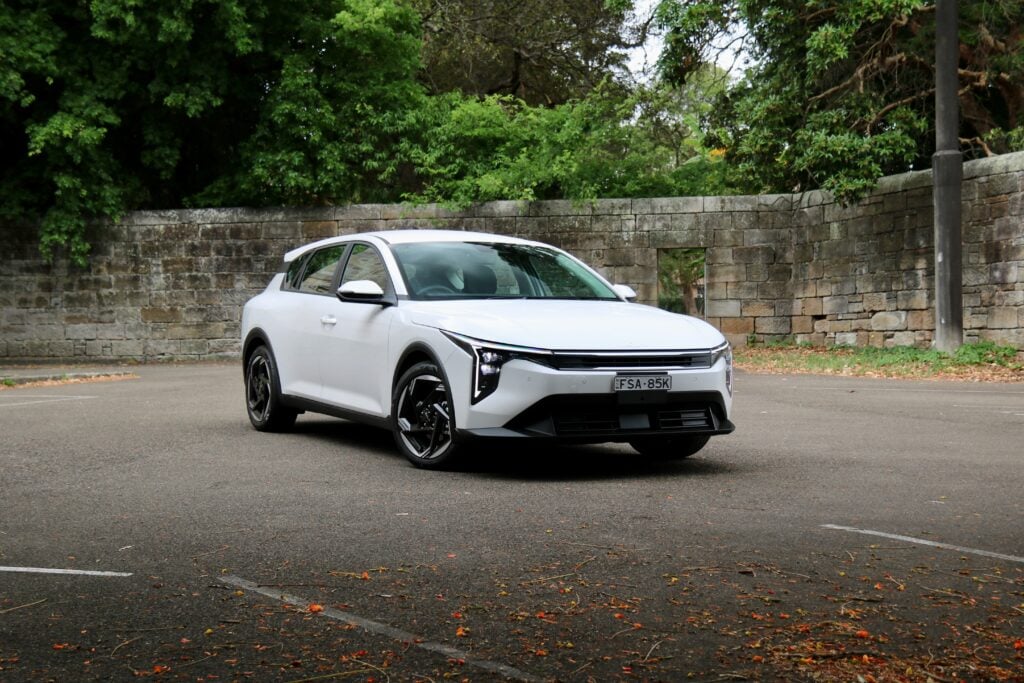
Having been slightly underwhelmed by the CVT-equipped Spark LT wearing 16-inch alloys in our three-car comparison, I thought I’d take a punt on the simple pleasures of a base LS with 14-inch wheels, a five-speed manual and an RRP of just $13,990.
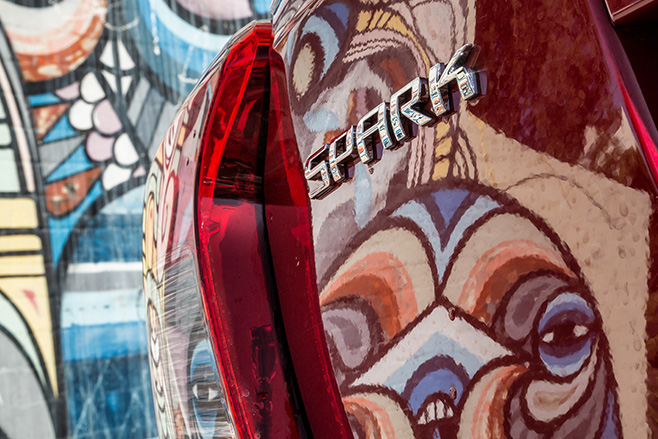
But the LS is no poverty pack. You get air-con, power front windows, remote central locking, a height-adjustable driver’s seat, a trip computer, daytime running lights (halogen, not LED), a six-speaker stereo with 7.0-inch colour touchscreen and Apple CarPlay (or Android Auto if you’re an Apple-hater), Bluetooth phone connection and, on MY17 models, standard cruise control. Indeed, the only option is a ‘driver assistance pack’ that adds a reversing camera and rear parking sensors for $550.
Thing is, the base Spark is much more than the sum of its parts. Even on the journey home from Suttons Arncliffe to Newtown, the Spark instantly impressed with its ride, refinement and grown-up feel. There’s a strength and solidity that transcends its small, inexpensive origins, yet with all the benefits of minimal weight and compact size to enhance its agility.
The biggest surprise, however, is the Spark’s manual gearbox. Fearing the rubbery, notchy shift feel that typified GM manuals for many years, the Spark’s neat little five-speeder is a revelation. Slick, positive and a breeze to use, the manual allows the tractability of the Spark’s new-gen, all-aluminium 1399cc naturally aspirated four to truly shine. It pulls cleanly, if casually, from just 800rpm in third gear and would make even the laziest driver seem smooth and proficient.
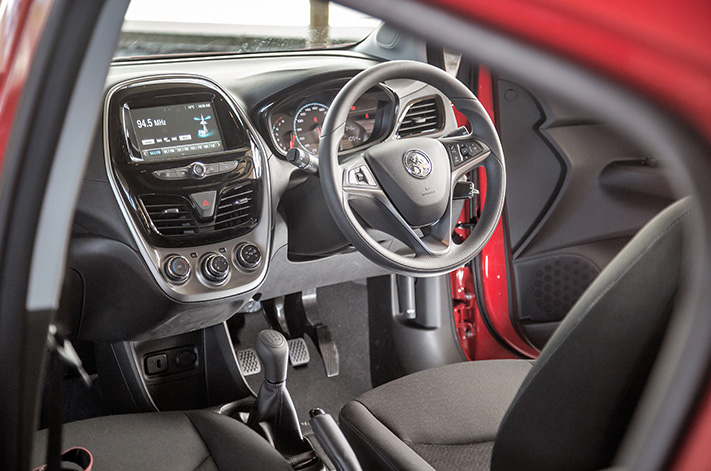
In conjunction with sharp steering, keen handling and grippy little 165/65R14 Continentals, the eager drivetrain makes it a bundle of fun around the suburbs. You don’t need to be doing illegal speeds to enjoy motoring in the Spark, and there are the added benefits of a tight 9.6m turning circle, excellent forward vision and unexpectedly good seat support.
I even like the Spark’s looks, despite the overbearing brightness of its ‘Straya Post’ red paint (which Holden prefers to call Absolute Red) and the cheapness of its five-spoke plastic wheelcovers. A bit more effort in this department could’ve really lifted the Spark LS’s visuals, so I’ve been led to ‘rally spec’ it (which is to say I’ve taken them off).
The Spark does have one obvious flaw. While its five-door body and neatly shaped 185-litre boot make it a peach for shopping and general urban duties, the rear-seat folding procedure is a pain in the arse. Holden claims you can either fold the backrests forward or flip up the 60/40 split cushion, then dump the backrests for a fully flat floor, but the reality isn’t that simple. The backrests will barely tip forward if you don’t flip the cushions, and when you do, you need to remove all three headrests and slide both front seats forward to get the back seat flat.
Three stitched-in pockets to house each headrest makes the process neater, but it’s a far from simple procedure, and I can’t maintain my normal seating position when the rear seat is down. Thankfully, that’s a rare compromise; otherwise, the manual Spark is proving a genuine delight.
Update #1
By Nathan Ponchard
IT’S really easy to bag technology for bombarding us with crap. Near-constant phone and email access, and an inability to remain calm for any longer than a few moments without fingering a smartphone says that ‘switching off’ should be a matter of sanity, not laziness.
If you’re an audiophile, however, and your life requires a constant backing track, then right now is a damn fine time to be alive.
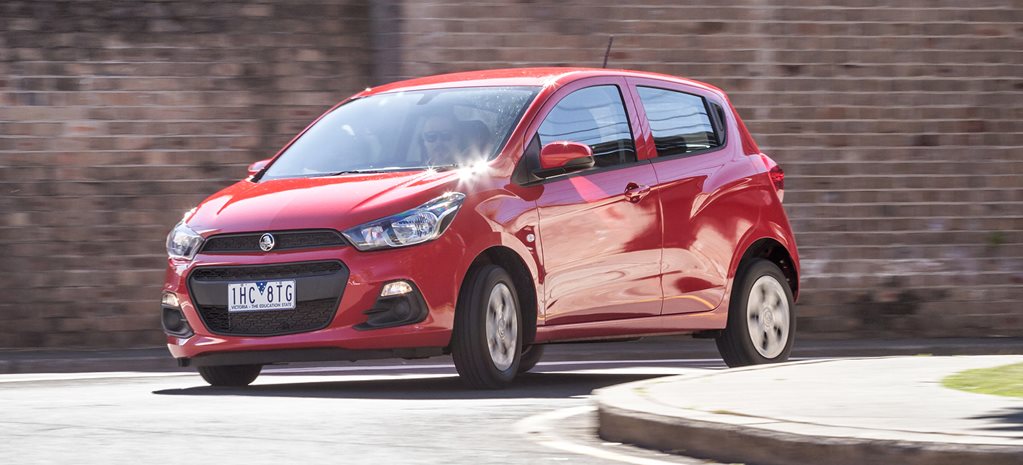
Not only has the youth of today rediscovered the texture and warmth of the vinyl LP, but we have unprecedented access to more music than we know what to do with. And, even in something as basic as our Holden Spark, the facility to enjoy said mountains of music in crisp, clear quality.
I remember thinking the digital-tune, four-speaker tape deck in Mum’s 1990 Mazda 121 was a pretty neat unit for a budget hatch, but here we are more than 25 years later in a micro hatch wearing exactly the same sticker price as the 121 did all those years ago, boasting what would have seemed like the greatest system in the world back then.
In terms of box-ticking audio appeal, the Spark LS is bang up to date.
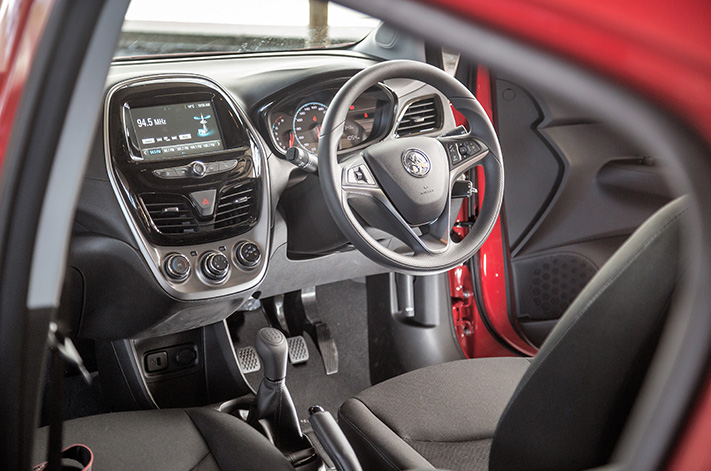
Apple CarPlay, a decently sized colour touchscreen (most people would be reasonably happy with seven inches, I’d imagine) and six unexpectedly gutsy speakers (one each in the lower doors, plus a tweeter at the base of each A-pillar) gives the Spark the multimedia firepower it needs to win over the under-25s.
And I still get a kick out of hearing Siri read out scandalous texts, enunciating swear words in her proper accent with utter professionalism.
As for the Spark’s driving experience, it remains a doddle in inner-city Sydney, despite the 1399cc engine’s lack of bottom-end muscle. Keen, balanced handling, a pin-sharp turning circle and a robust feel continue to defy the Spark’s demure proportions.
When parking the car and walking away, I’m constantly surprised by just how small it is relative to its grown-up ability. The humble Spark is definitely greater than the sum of its parts.
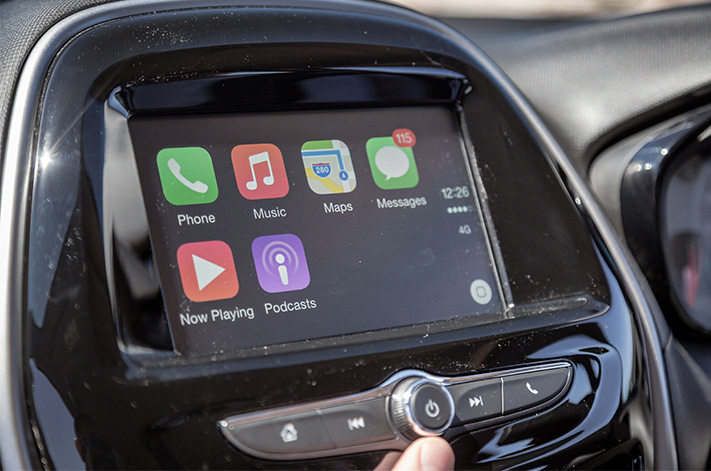
But it’s crying out for more torque. Tractable the atmo 1.4 may be, but there’s precious little urge below 4000rpm, meaning your right foot spends plenty of time attempting to bury the accelerator deep into the floor, to the detriment of economy.
Admittedly, we’ve been commuting in some of the heaviest traffic Sydney can serve up, but – much as I hate to admit this – the five-speed manual doesn’t have the ratio spread of the CVT to plug the engine’s torque holes. And while the 14-inch-wheeled LS rides better than the LT on 15s, its eco-biased 165/65R14 tyres fail to flatter the Spark’s handling and steering the way the sportier 185/55R15 Continentals do.
With a Blue Mountains weekend away looming, as well as a motorway jaunt to Newcastle and back, maybe it’s the breather the Spark needs to deliver fuel economy worthy of a micro car.
Update #2
By Nathan Ponchard
NOTHING beats back-to-back testing for delivering a definitive verdict on all topics related to dynamics, as Car of the Year proved.
It finally gave me the opportunity to directly compare opposing Sparkvariants – LS manual on 14s and LT auto on 15s – to see which is the sweeter package (compare specs here).
With its chassis honed at Holden’s Lang Lang proving ground and on the challenging roads around Victoria’s Gippsland region, no Spark is a dynamic duffer. But away from the lower-speed demands of urban warfare, it becomes clear that the Spark’s handling and steering shine brightest when taking advantage of the far superior grip of the up-spec LT’s 185/55R15 Continental Premium Contact tyres.
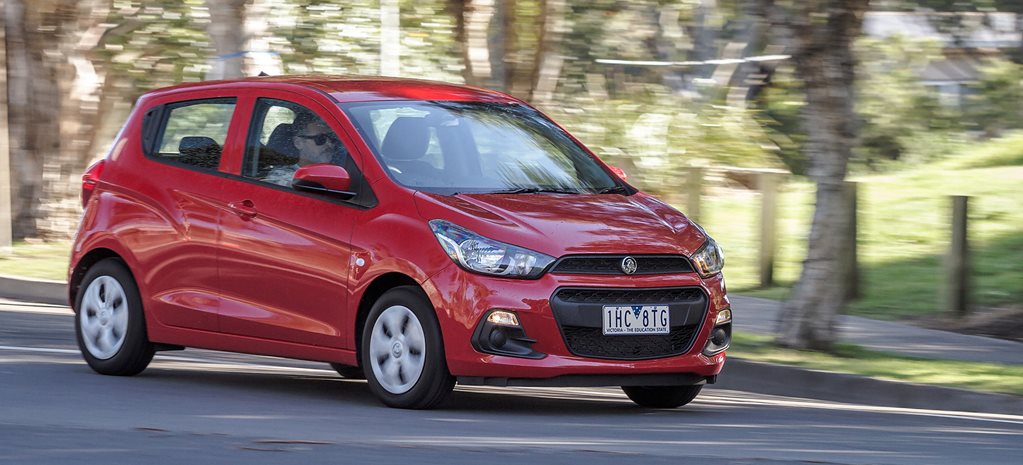
Gone is the smaller-tyred LS’s propensity to lose adhesion as lateral forces build, resulting in a lack of true commitment from both its front and rear ends in tight cornering.
The LT, on the other hand, has greater handling reserves, more consistent road-holding and much crisper response. It also steers better, thanks not only to a leather-bound steering wheel but also firmer and more linear steering weighting, courtesy of its broader footprint.
The LT may not ride like the supple LS in town, but everywhere else, its sharper, more adjustable nature enhances the Spark’s driver appeal. And the CVT is really quite good. It steps off the mark well and seems to extract the best from the Spark’s torque-light atmo 1.4.
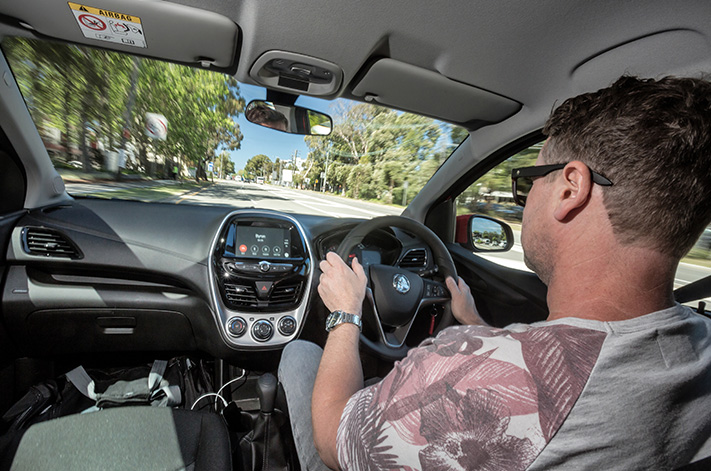
Ideally, GM’s base 1.0-litre turbo-petrol three-pot with 170Nm from 1800-3700rpm (as per the three-door Opel Adam in Europe) would be a thrummy delight under the Spark’s bonnet, but at this price-sensitive end of the market, it’s pointless speculation (though, in future, an inevitability).
Packing three adults into our Spark manual is no challenge for its packaging efficiency, but you definitely notice the detrimental effect on its performance.
Again, its somewhat thirsty all-aluminium engine is an amazingly tractable little unit, but it demands plenty of revs if you’re in a hurry. And with pre-Christmas deadline stress looming large, that was always.
Sydney’s warm weather has also demanded liberal applications of soothing air-con, which the Spark achieves effortlessly.
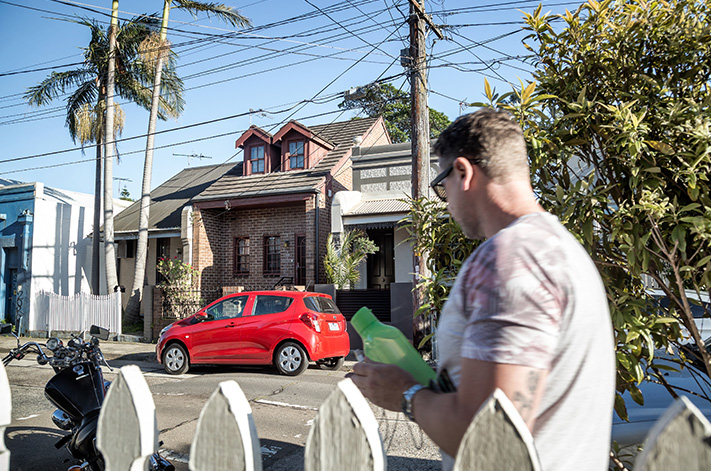
But with the chiller off, there seems to be a disparity between the outside temp and what’s coming through the dashboard vents, as if heat-soak from the engine bay is infecting the ventilation.
What hasn’t happened, though, is a cooling of affection for this redder-than-Santa Spark. Sure, I desperately miss the grunt and grumble of the twin-turbo AMG that this baby Holden replaced, but every time I’m faced with a tiny parking space or gap in traffic, there’s a winning smugness to accompany this $13,990 special.
Update #3
By Nathan Ponchard
WHOEVER said small cars couldn’t (or shouldn’t) do big distances was talking out of their clacker. Remember the original Volkswagen Beetle?
That air-cooled marvel could once be found in just about every corner of the country, able to drive for hours at its claimed “maximum and cruising speed” of 115-120km/h and renowned for being able to withstand the torture Australia threw at it.
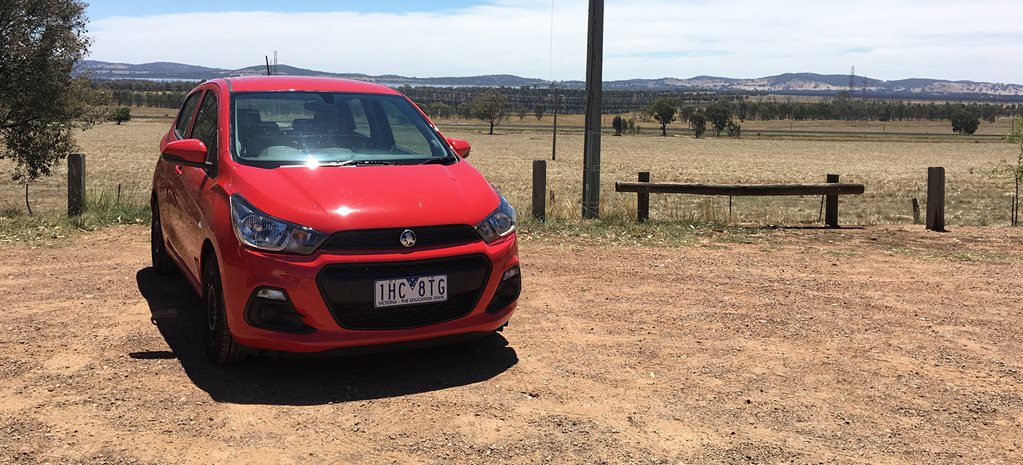
Those goat tracks of the past would be far too rough for a Holden Spark, but a modern-day challenge of Sydney to Melbourne and back in searing summer heat is as good a test as any for a city-biased microcar.
Two weeks prior, the Spark tackled a weekend blat to Newcastle and impressed with its highway grunt and overall maturity. Solid in crosswinds, supportive of seat and absorbent of suspension, it’s a baby hatch that comfortably feels at home on the M1.
As a slower car moved to the left on the Mooney Bridge hill, I dropped the Spark back to third and flattened it. Its rev-happy 1.4 effortlessly wound out towards the tacho’s 6500rpm redline, leaving lazier cars fading in its wake. As expected, revs and open road are clearly this engine’s erogenous zone.
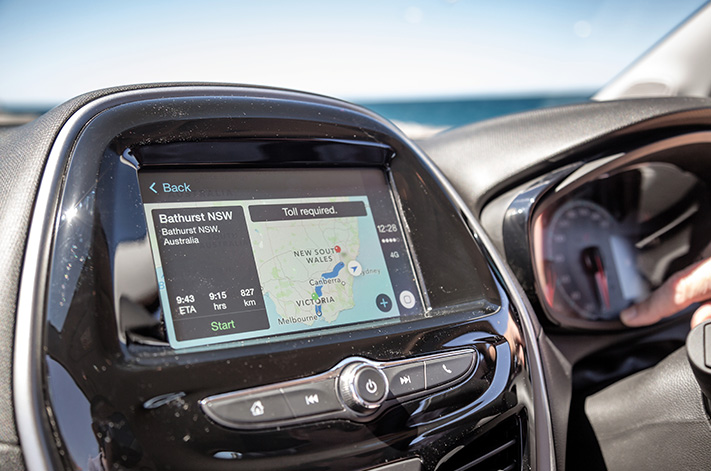
The trip to Melbourne was slightly different. On a dual-carriageway road that bypasses every town for 850km, less traffic and longer hills meant ample opportunity for testing the Spark’s cross-country calm. And not once did I have to disengage cruise control by dropping it down to fourth.
Just under 120km/h on the speedo sees the engine humming pleasantly at just over 3000rpm, though given the Spark’s favoured working environment resides beyond three-five, a 130km/h gallop would’ve been even more effortless. And appropriate. And safe!
On a few steep climbs, the Spark slowed to just above 110km/h as its efficient air-con transformed furnace-like heat into fresh air, though turning A/C off gave it the required shot in the arm.
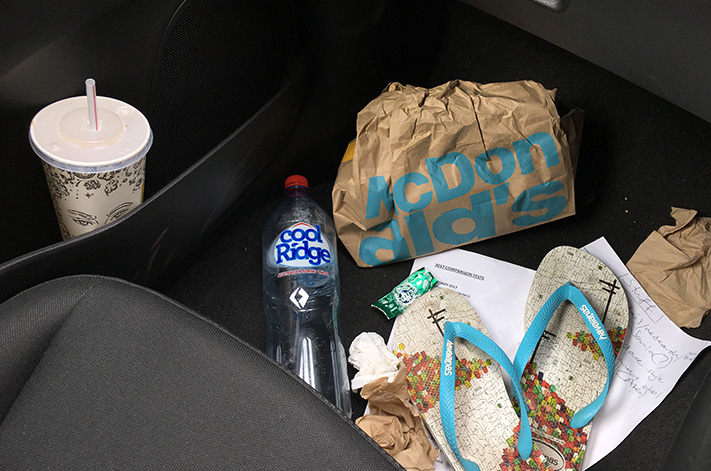
No Judgement! Ultra-rare Maccas depravity on the Hume: post-mix Coke, quarter pounder (jammed with fries) and a serving of shame
This stuff, however, I already knew. What I wasn’t so sure of was the Spark’s eight-hour toleration index.
Turns out a day’s worth of driving isn’t something to be feared. Besides some moderate wind rush at freeway speeds and a fair amount of tyre roar on coarse-chip surfaces, the Spark is remarkably polished.
Admirable front seat comfort (despite widely spaced positions on its lever-adjust backrest), plenty of space to put your feet, terrific vision and an impressively well-damped ride give this little Korean-built, Aussie-tuned Holden the fatigue-reducing capability to tackle any (sealed) road you can throw at it.
It’s no Golf VII when it comes to ride plushness, but given the size of its wheelbase (shorter than an original Beetle’s) and the cost efficiencies that a boggo hatch demands, the Spark is a fine all-rounder whose abilities extend far beyond its lowly station in life.
Update #4
By Nathan Ponchard
DESPITE feeling like an Australia Post employee for much of the last five months, hammering about town at delivery-boy speeds in my red hubcap-free Spark LS, it’s been something of a revelation learning to live with one of the cheapest cars on sale in Australia.
And that’s because it doesn’t feel cheap.
There’s a grown-up maturity to the Spark that defies its diminutive size, though admittedly it’s no Volkswagen Up. From the expansive feel seated behind its perfectly sized plastic steering wheel to its surprisingly comfortable seats and well-sorted ergonomics, the Spark has been welcomed into our family like a fluffy new puppy.

I even like the way it looks, and get defensive if anyone starts to take the mickey, as any doting parent should. But it’s time to move on, and I’m looking forward to re-discovering the joys of something with torque.
Off the back of the burbling, boisterous twin-turbo AMG V8 that preceded the Spark, probably the hardest thing to live with has been the all-aluminium 1.4’s absence of bottom-end. And its lack of sporting noise. Even when driving the C63 S at walking pace, its wonderfully antisocial exhaust rumble was enough to take the stress out of almost any traffic snarl.
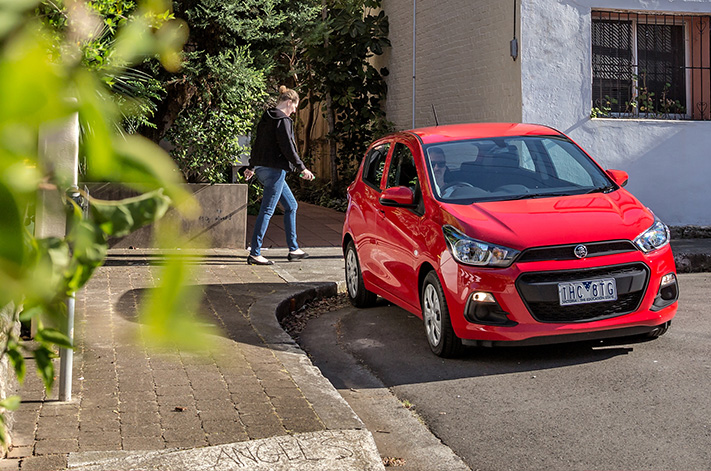
The Spark’s encouraging personality and wieldy size has seen my patience disappear faster than my dignity after a skin-full, forcing a conscious effort to not drive the Spark flat out everywhere. This is reflected in its improved fuel consumption and a newfound respect for its tractability (on flat roads, at least).
The Spark will pull in any gear from around 1200rpm, which is deeply admirable for a microcar. And yet it’s equally as effortless covering ground at 130km/h (where permitting), the tacho settling neatly in its 3500rpm-plus power band.
While this new-gen Spark leaves its repellent Barina Spark predecessor for dead in absolutely everything it does, it isn’t quite a straight-A student. GM’s Korean cabin plastics continue to be scratch-prone, and after 50,000km of abuse, I reckon the Spark’s door trims, ignition-key surround and boot edges would look pretty shabby.
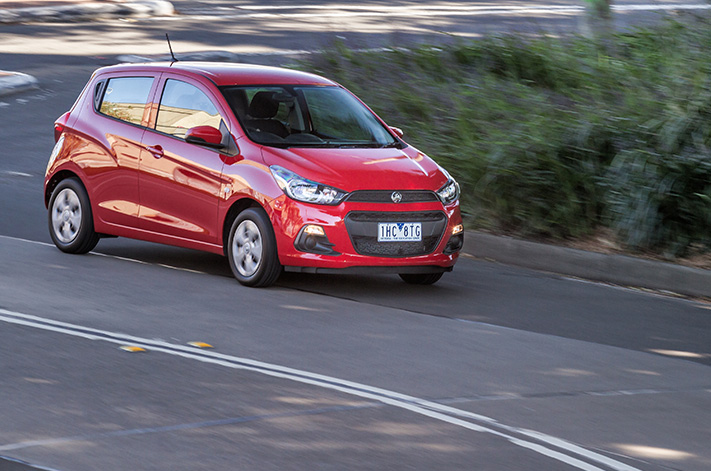
My hatred of inadequate lever backrest adjustment was compounded by the compromised position I had to accept in the Spark (though at least it has a proper seat-height crank mechanism), and the base LS’s eco-biased Continental tyres weren’t much chop in the wet. They also lacked the outright grip to properly flatter the Spark’s fine chassis and pointy steering.
I don’t understand the anti-democratic decision by Holden to offer 16-inch alloy wheels as an option only on the $19K LT auto, when a manual LS in a funky colour (like the French racing-esque Splash Blue) with grey 16s could look really cool. And the overly shiny wheelcovers clipped to the LS’s steel 14s are among the most unfortunate pieces of tat I’ve ever seen.
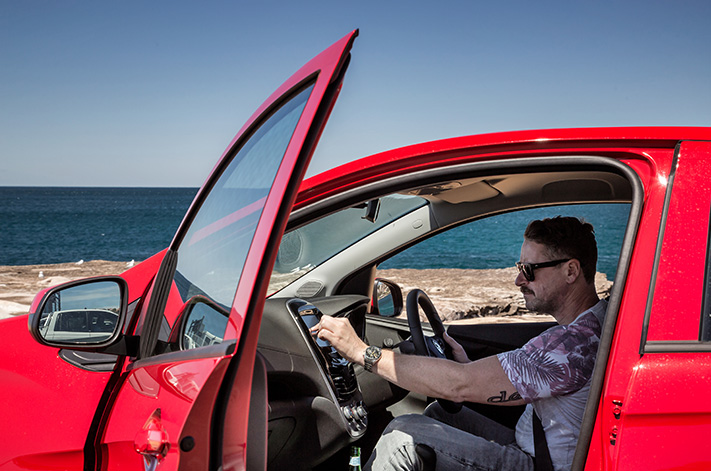
The Spark really does deserve better. Perhaps a deliberate decision was made to keep the larger (and likely more profitable) Barina relevant, seeing the Spark offers superior seat comfort, an engine that doesn’t grumble like an industrial fan, better open-road performance, a more attractive dashboard, and a more sophisticated feel than its ageing sibling.
Unfortunately, the ultimate Spark spec doesn’t really exist – LS model (so you get hard-wearing, well-stitched cloth seats, not the LT’s putrid vinyl), a leather steering-wheel rim (sadly, LT only) and Continental Premium Contact tyres (again, sadly, exclusive to LT) – but there’s a chance that planets may align in the future, finally realising the Spark’s true potential as a pint-sized ball of unexpected goodness.


